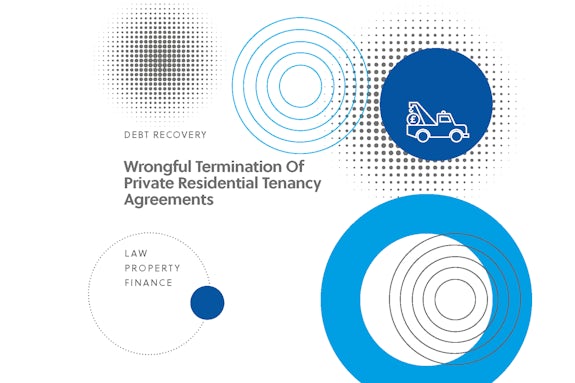A year ago I blogged about the significant extensions to tenancy termination notice periods required where landlords sought to recover possession of their properties from residential tenants. For the majority of eviction grounds the period of notice was extended to 6 months. This was a direct result of Coronavirus legislation which intended to keep tenants housed as long as possible during these difficult times.
There are a few grounds whose notice periods are less, for example 28 days or 3 months. Landlords may be tempted to use one of those grounds in their termination notice so as to circumvent the need to give their tenant the longer 6 month notice, ultimately recovering possession of their property quicker. Where such an eviction ground is intimated to a tenant but the landlord’s underlying intentions behind that ground are not genuine, those landlords would be wise to consider the recent landmark case ofRodriguez-Ortega v Dominguez-Lopez.
The First Tier Tribunal for Scotland have now shown that they are ready, willing and able to grant orders in terms of the Private Housing (Tenancies) Scotland Act 2016 for “Wrongful Termination” against landlords who have evicted a tenant or have caused the tenant to leave the let property under false pretences. The consequences of such an order can be disastrous for a landlord.
So in the context of Scottish Private Residential Tenancies, what is Wrongful Termination?
Wrongful Termination
Where a private residential tenancy has been brought to an end by either the tenant ceasing to occupy the let property on the back of a notice to leave or by the issuing of eviction orders, and the tenant can prove to the First Tier Tribunal that the landlord deliberately misled either the tenant into leaving the property or the tribunal in granting orders for eviction, then the tribunal has the power to grant a Wrongful Termination order against the landlord. That can result in a financial penalty against the landlord payable to the tenant of up to six times the monthly rent due for the prior tenancy.
A typical example of a “wrongful termination” is where, say, the landlord indicates that they intend to move themselves or their family into the let property and upon obtaining vacant possession does not, instead granting a fresh tenancy to a new tenant. That is precisely what happened in the case of Rodriguez-Ortega v Dominguez-Lopez.
Rodriguez-Ortega v Dominguez-Lopez
The landlord in this case (Mr Dominguez-Lopez) obtained orders for eviction against the tenant (Rodriguez-Ortega) in July 2019. Those orders were granted on the landlord’s representations to the Tribunal that he intended to renovate the property then move himself and his family into the property. The tribunal had no issue in granting orders for eviction, there being nothing to suggest that the landlord’s intentions were nothing but genuine.
However, sometime later an application for wrongful termination was raised by the tenant. He became suspicious that the landlord had in fact moved his family from their own 3-bedroom property into the smaller sized studio flat. On hearing further evidence the Tribunal found that the landlord had made no renovations to the property or nor moved in with his family. Instead he had granted a fresh tenancy to a new tenant within a month of the Tribunals’ Order.
The Tribunal found the landlord had been dishonest in his prior representations, that the tenancy had been wrongfully terminated and that the tenant was entitled to an award of payment in terms of the 2016 Act. Careful deliberations were made when deciding the size of award to be granted against the landlord including i) the amount of rent due under the prior tenancy, ii) whether at termination the tenant had been in rental arrears, iii) the length of time the landlord had maintained their dishonesty and iv) the gravity of the landlord’s dishonesty. The tribunal decided to award the tenant three times the monthly rent rather than the maximum of six times.
Lessons For Landlords
Now more than ever landlords must be careful when choosing what eviction grounds they intend to rely on. They must be able to prove their intentions and most importantly follow through with them. Whilst there was discussion in Rodriguez-Ortega about landlords being permitted to change their intentions after they recover possession, that brings with it the added responsibility of making sure the landlord has credible evidence which can back up their deviation.
This case shows how the law was intended to be applied in order to stop landlords fabricating their grounds to avoid the open-endedness of private residential tenancies. Landlords will be held to account when terminating and dishonesty in that termination will not be tolerated lest it could land the deceptive landlord with a hefty penalty pay-out.
It would seem however that the majority of landlords have been acting honestly. This case is the first of its kind. So long as landlords pay attention to the lessons given in this case it will hopefully be the last. On the other side of the coin, the case may lead more tenants to keep a closer eye on their landlord’s post termination dealings.
If you are considering the termination of your private residential tenancy and would like to speak with one of our solicitors before doing so please don’t hesitate to get in touch with our Debt Recovery department.
If you would like further information regarding the topics discussed in this blog, please contact:
David Alexander by email: dalexander@gilsongray.co.uk or by phone: 07841 920 089 / 0131 516 5362
You can also visit our Debt Recovery Team page by clicking here.
The information and opinions contained in this blog are for information only. They are not intended to constitute advice and should not be relied upon or considered as a replacement for advice. Before acting on any of the information contained in this blog, please seek specific advice from Gilson Gray.








